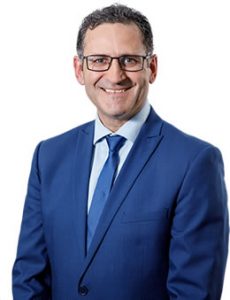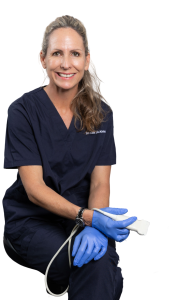Dr Lekich is the Medical Director of Vein Doctors Group. He changed career paths from pursuing an eye career to the treatment of venous disease following the serious complication of a blood clot his then-wife had with varicose veins during pregnancy. As well as offering a comprehensive modern non-surgical treatment for varicose veins, Dr Lekich established a pregnancy vein service to support women with varicose veins during pregnancy.
Further, he explored the specialised Open Ended Vasectomy to offer this service to the partners of his female patients who have to stop the oral contraceptive pill due to their varicose veins.After completing his medical degree in 1991 from the University of Queensland, Dr Lekich worked at the Royal Brisbane Hospital as a resident for three years. As a senior medical officer, he completed numerous country hospital rotations as a relieving Medical Superintendent. At Royal Brisbane Hospital his focus was on surgical/procedural-based specialisations.
Further, he has a strong background in Emergency Medicine and eyes namely the retina.Dr Lekich’s four (4) year fellowship training with the peak body for non-surgical management of venous disorder in Australia was with the Australasian College of Phlebology. This meant that Dr. Lekich had achieved the highest level of structured advanced training for this modern non-surgical treatment of venous disorders in Australia.
To enable Dr Lekich to deliver the best possible ultrasound assisted treatment of varicose veins, he has undergone formal training by way of Certificate of Ultrasound in Phlebology (C.U.P): Introductory Course and Certificate of Ultrasound in Phlebology (C.U.P): Advanced Course.Dr Lekich’s supervisor during his advanced training was A/Prof Kurosh Parsi who is the Australasian College of Phlebology President, Vice President of the International Union of Phlebology and a PhD Researcher.
Other mentors of note are Australasian College of Phlebology founding members Dr Thibault, the father of Phlebology in Australia (NSW), Dr Loizou (Victoria) and Dr Jenkins (NSW).
Dr Lekich regularly attends conferences and on-going education seminars. He regularly speaks at scientific meetings and conferences and is involved in delivering workshops training doctors. Further Dr. Lekich is a preceptor, mentor and supervisor for phlebology trainees.
Apart from the study of medicine, whilst working full time, Dr Lekich has furthered his university education completing a postgraduate law degree (Juris Doctor) from Bond University in 2004 inspired by the medical indemnity crisis. He then completed the Bar Practice Course at the Queensland University of Technology in 2005 and was admitted as a Barrister in the Supreme Court of Queensland in 2005.
He completed his Masters of Business Administration also at Bond University and has been an Assistant Professor in the Bond University Medical School, Gold Coast Australia.Additional to Dr. Lekich’s venous work, he was trained by the pioneer of the specialised form of vasectomy Dr. Bruce Errey of the 30,041 Open Ended Vasectomy fame. This approach to vasectomy is very specialised and performed by a small percentage of doctors. This form of vasectomy is designed to minimise post vasectomy congestion pain and is more readily reversible should circumstances change.
This Open Ended Vasectomy service complements the care Dr. Lekich provides his female vein patients so that they can stop the oral contraceptive pill.Further Dr Lekich has been trained to perform microsurgery personally at the microscope over three years by the Father of Microsurgery, Professor Earl Owen. Professor Owen performed the world’s first hand and double hands transplant and the collaborator of the first face transplant. This microsurgical training enables Dr Lekich to successfully reverse vasectomies.Dr Lekich is a devoted father of three children and he enjoys influencing them to the best young adults they can be. His other languages include fluent Croatian and Serbian.
The following are Dr Chris Lekich’s professional Society Memberships:
- Preceptor Graduate School of Medicine-Clinical and Scientific Teaching -1997
- Australian Medical Association -National Membership-Current
- Australian Medical Association -Queensland Branch Membership- Current
- Gold Coast Medical Association- Current
- Clinical Ophthalmic Workshop Mentor Programme – Princess Alexandra Hospital July 2004
- Admitted Supreme Court Queensland as Legal Practitioner, March 2005.
- Member Queensland Bar Association 2005 – Current
- Assistant Professor Medical School Bond University 2005-2010
- AHPRA Medical Board of Australia Registration- Current
- Member of the American Society of Reproductive Medicine
- Member of the Australasian College of Phlebology (ACP)-Current
- Preceptor for Australasian College of Phlebology Basic and Advanced Training-Current
- Member of the Australian New Zealand Society of Phlebology -Current
- Member of the Medico legal Society of Queensland-Current
- Board Member of the Australasian College of Phlebology -Current
- ACP Chair of the Australian Medical Council Specialist Accreditation Committee-Current
- ACP Member of the Continuing Professional Development Committee -Current
- ACP Member of the Ethics and Standards Committee-Current





